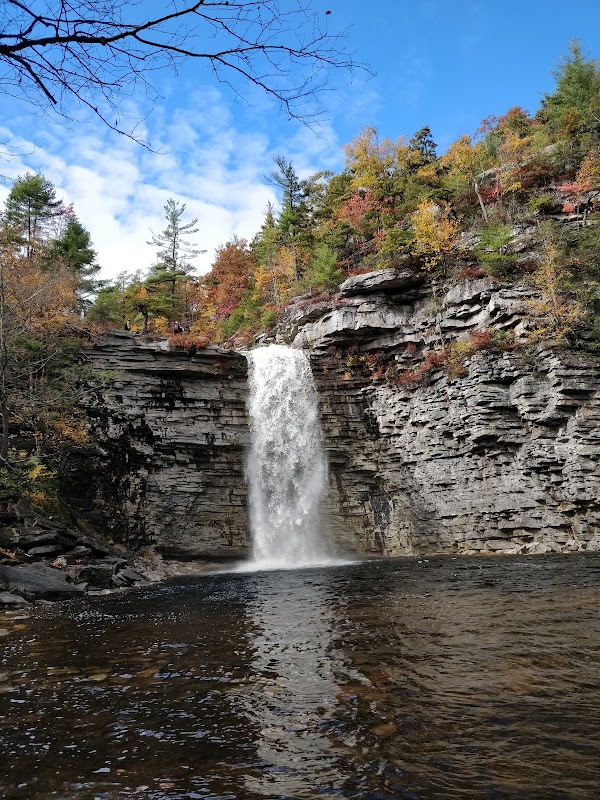
Your Guide to Outdoor Activities with Urban Paddle Kayaks in Jersey City, New Jersey
Experience Jersey City from a fresh perspective with urban paddle kayaking along its dynamic waterfront. This guide offers essential tips and insights to help you navigate the city’s waterways safely while soaking in impressive skyline views and local wildlife encounters.
Adventure Tips
Time Your Paddle for Calm Waters
Early mornings and evenings tend to have calmer currents and fewer boat traffic, making your paddle smoother and safer.
Wear Non-Slip Footwear
The launch docks can be wet and slick—choose shoes with good grip to prevent falls getting in and out of your kayak.
Stay Hydrated on the Water
Bring a leak-proof water bottle; urban paddling can be deceptively exerting, especially under the sun and breeze.
Respect Boat Traffic & Currents
Keep an eye on ferry routes and be ready to adjust your course—currents can push unexpectedly, and boats move fast here.
Your Guide to Outdoor Activities with Urban Paddle Kayaks in Jersey City, New Jersey
Jersey City's waterfront pulses with an energy defined by its blend of urban grit and natural fluidity. Urban paddle kayaking here offers a unique vantage point—a way to engage directly with the city's waterways that both dare and invite you forward. From the Hudson River’s steady current to the quieter tributaries slipping through the city’s edges, paddling here is a practical thrill for adventurers of all levels.
The typical paddle route stretches about 5 miles along the waterfront, with easy access points at Liberty State Park and Exchange Place. The water’s temperament is mostly mild, but it tests your skills with occasional ripples from passing ferries and wind gusts traveling between skyscrapers. Expect smooth, flat water framed by reflective glass towers mingling with the distant Statue of Liberty, a steady companion that watches your progress.
Timing is key: early mornings offer calm waters and the soft light brings out Jersey City’s steel and stone textures, while evenings turn the skyline into a glowing silhouette against a dimming sky. Avoid peak weekend afternoons if you prefer solitude; the area buzzes with locals and tourists, turning calm lanes into busy thoroughfares.
Before you launch, prepare with layered, water-resistant clothing and secure footwear; the docks can be slick underfoot. Hydration matters—bring a sturdy, leak-proof water bottle to stay fueled and alert. Paddling urban waters requires respect: current and boat traffic are active forces that demand attention and courteous navigation.
Beyond the kayak, Liberty State Park is a practical launchpad with amenities for check-ins and gear rental. If you're new to kayaking, guided tours provide safety and local insights, guiding you through currents with a mix of history and geography that grounds your adventure.
The environment isn't just a backdrop; the currents push you to read the water’s signs, while gulls and occasional osprey patrol overhead with assertive wings. Each paddle stroke offers a steady rhythm in sync with the city’s pulse, a reminder that nature here is fiercely itself.
This is more than a paddle trip; it’s an urban exploration where water and cityscape challenge and complement each other. Whether you come for the workout, the views, or the chance to connect with a little-known side of Jersey City, your journey on the water promises balance—a practical adventure, wrapped in the exhilarating clarity of the open river.
Nearby Trips
All Adventures
Boat Charters
Water Activities
Adventures near Jersey City, New Jersey
Discover the unique and memorable adventures that make Jersey City, New Jersey special.
Frequently Asked Questions
Where are the best launching points for urban paddle kayaking in Jersey City?
Liberty State Park offers ramp access with parking and rentals nearby, while Exchange Place provides a convenient downtown launch with stunning skyline views and ferry proximity.
Is urban paddle kayaking safe for beginners in Jersey City?
Yes, guided tours and calm sections of the waterfront make it accessible for newcomers, but novices should avoid busy ferry lanes and high wind days.
What wildlife might I see while paddling in Jersey City’s waterways?
Expect gulls, occasional osprey, and curious river fish. In spring and fall, migratory birds visit the area, offering good birdwatching opportunities.
Are there any historical landmarks visible from the kayak routes?
Yes, the Statue of Liberty dominates the skyline along the Hudson River route, and remnants of the waterfront’s industrial past can be spotted along the piers and docks.
What environmental precautions should paddlers take in urban waterways?
Avoid littering, stay clear of restricted or sensitive habitats, and use eco-friendly gear when possible to minimize impact on the water and wildlife.
When is the best time to photograph the Jersey City waterfront from the water?
Early morning and late afternoon provide soft, angled light highlighting the skyline’s reflection and contrast, while twilight adds dramatic city lights with long exposure potential.
Recommended Gear
Life Jacket (PFD)
Mandatory for safety on urban waterways with boat traffic and variable currents.
Waterproof Layered Clothing
Keeps you warm and dry in cooler or unpredictable weather without restricting movement.
Hydration Pack or Water Bottle
Necessary for maintaining energy and focus, especially under summer sun.
Dry Bag
Protects electronics and essentials from splashes or unexpected dips into the water.
Local Insights
Hidden Gems
- "The small inlet near Hamilton Park, where you can pause and watch kayak activity against quiet city gardens."
- "A lesser-known stretch behind Liberty State Park’s central meadow revealing peaceful water and native plants."
Wildlife
- "Herring gulls dominate the skies."
- "Ospreys seasonally soar overhead and nest on nearby piers."
- "Occasional river otters have been sighted near quieter inlets."
History
"Jersey City’s waterfront was once a bustling port shaping the city’s industrial rise. Its waterways served as arteries for shipping and immigration, remnants of which remain visible in decayed docks and old crane structures."
